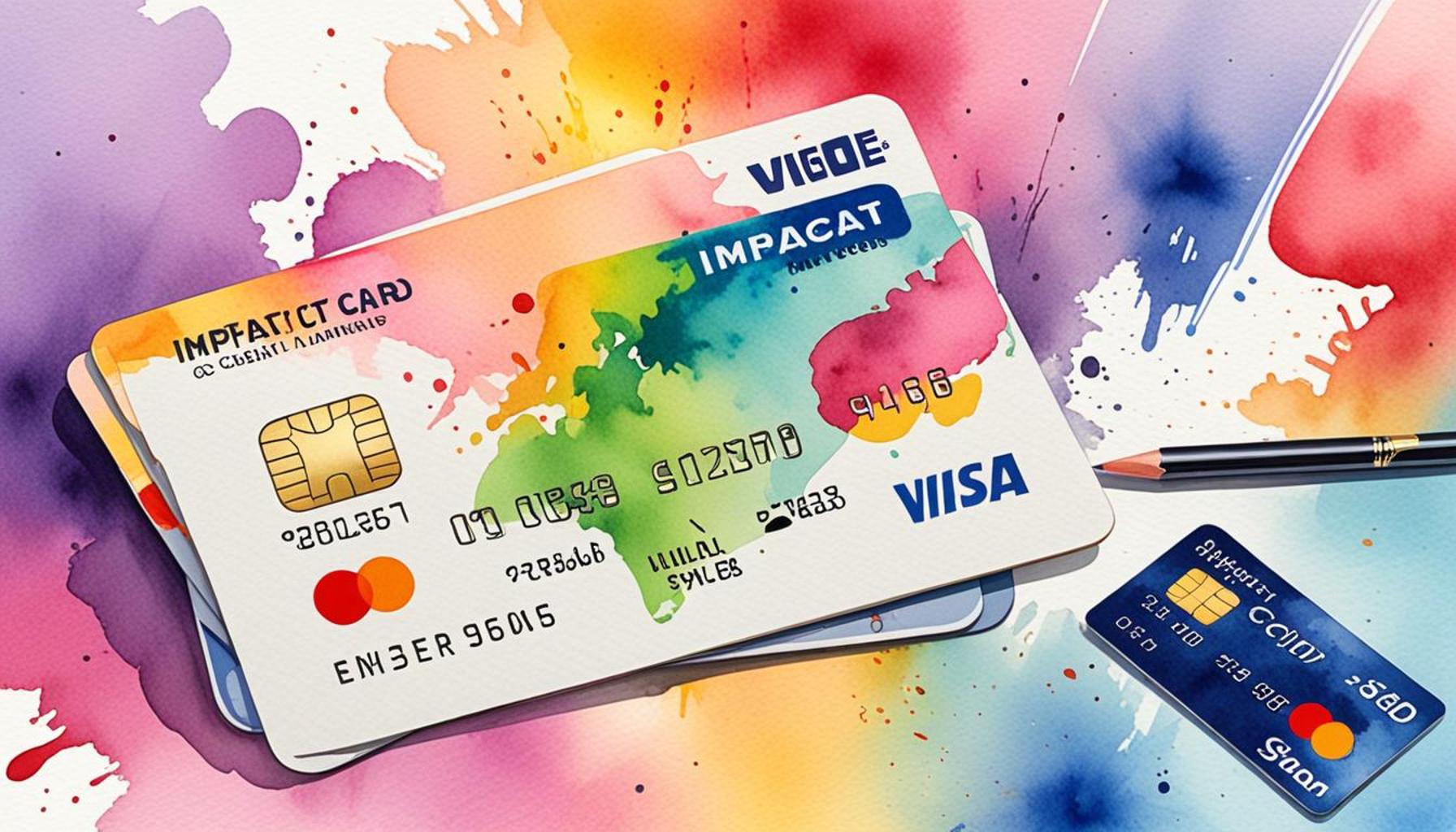How to balance debts and investments in your financial plan

Finding the Right Balance
Managing your finances can feel like a juggling act. Keeping track of both debts and investments is essential for a healthy financial future. Striking the right balance between paying down debts and investing for growth is crucial in achieving your financial goals.
Understanding where to allocate your funds might seem overwhelming at first. However, by considering several key factors, you can make informed decisions that protect your financial wellbeing:
- Interest Rates: High-interest debts, such as those associated with credit cards, often take priority. For instance, if you have a credit card with a 20% interest rate, you could be losing money every month by only making minimum payments. Prioritizing this debt is necessary because the interest accumulates quickly, making it harder to pay off over time.
- Investment Returns: When it comes to investments, look for options that have historically yielded good returns. For example, stock markets on average can provide returns of around 7% to 10% annually. When your debts carry an interest rate lower than your investment return, it may make more sense to invest while paying down debts at a slower pace.
- Emergency Funds: Before focusing solely on investments or debt repayment, ensure you have sufficient savings to cover unexpected expenses. A rule of thumb is to have three to six months’ worth of living expenses saved. This safety net helps protect you from unplanned financial burdens, allowing you to tackle debts and investments with more confidence.
By prioritizing these factors, you can create a comprehensive financial strategy. Remember, a well-adjusted balance between debts and investments allows you to:
- Reduce financial stress by taking control of your financial obligations.
- Build wealth over time through careful investments, ultimately increasing your net worth.
- Secure your financial future by preparing for both short-term and long-term goals.
As we delve deeper into this guide, you will learn effective strategies to manage your debts while still investing wisely. For example, consider the snowball method for debt repayment, where you focus on paying off your smallest debts first, gaining momentum as you eliminate them. Meanwhile, contributing to employer-sponsored retirement accounts, such as a 401(k), can help you benefit from employer matches and tax breaks.
It’s time to take control of your financial plan and make informed decisions that lead to long-term success. With patience and careful planning, you can master the art of balancing your financial responsibilities and aspirations.
Assessing Your Financial Status
Before you can achieve a harmonious balance between debts and investments, it’s essential to take a thorough inventory of your current financial status. Begin by gathering all relevant financial documents, including loan agreements, credit card statements, and investment account summaries. Understanding the full scope of your financial situation is crucial for making informed decisions moving forward.
Start by asking yourself the following questions:
- What are my total debts? List out all debts, including credit cards, student loans, mortgages, and auto loans. Knowing how much you owe in total provides clarity on your financial obligations.
- What are the interest rates on my debts? Identifying the interest rates associated with each debt helps you prioritize which debts to focus on first. For example, if you have both a credit card debt at 18% and a student loan at 5%, the credit card debt should be your primary concern.
- What are my current investments? Assess any existing investments such as stocks, bonds, or retirement accounts. Review their performance and potential future returns. This knowledge is instrumental in decision-making when balancing investment contributions and debt payments.
- What are my financial goals? Consider both short-term and long-term objectives. Perhaps you aim to eliminate debt within five years, while also saving for a down payment on a house or investing for retirement. Clear goals allow you to devise a balanced approach.
Once you’ve assessed your debts, investments, and financial goals, the next step is to create a budget that reflects your findings. A well-structured budget can act as a roadmap, guiding your income allocation towards paying down debts and increasing investments effectively.
In your budget, prioritize high-interest debts first. While it may be tempting to focus on lower-interest debts, the cumulative interest on high-interest debts can compound quickly, costing you more in the long run. Paying these off first not only cuts down the total interest you will pay but also frees up more money in your monthly budget for investments once they’re eliminated.
On the other hand, it’s crucial to continue investing, even while managing debts. This helps you build wealth concurrently. As a general practice, aim to contribute a minimum of 5% to 10% of your salary towards retirement accounts, especially if your employer offers matching contributions. This can significantly enhance your investment growth over time. Missing out on these matches is essentially leaving money on the table.
Ultimately, the goal is to create a balanced approach that addresses both your debts and your investments. With a clear understanding of your financial situation and a thoughtful budget, you can progress steadily toward your financial aspirations while minimizing stress on your finances.
Creating a Strategic Plan for Debt Repayment and Investment Growth
With a clear understanding of your financial situation and a solid budget in place, the next step is to develop a strategic plan that allows for both debt repayment and investment growth. This dual approach can be daunting, but with careful planning, you can achieve more stability in your financial life.
First and foremost, consider the concept of the debt snowball method versus the debt avalanche method when paying off debts. The debt snowball method suggests you pay off the smallest debts first, regardless of interest rates. The psychological benefit of eliminating smaller debts can provide a motivational boost as you see progress. Conversely, the debt avalanche method encourages focusing on the debts with the highest interest rates first, which can save you more money in the long run. Choose the method that resonates with you for better consistency in your repayment plan.
For your investments, consider utilizing a diversified strategy to minimize risk. Diversification entails spreading your investments across different asset classes, such as stocks, bonds, and real estate. This way, if one sector underperforms, it doesn’t heavily impact your overall portfolio. A rule of thumb is to maintain a balanced mix of assets based on your risk tolerance and time horizon. For instance, younger investors often lean towards stocks due to their higher potential returns, while those closer to retirement may prefer lower-risk bonds.
Utilizing Retirement Accounts to Strike a Balance
Strongly consider maximizing contributions to tax-advantaged retirement accounts like a 401(k) or an Individual Retirement Account (IRA). Contributions to these accounts not only help you save for the future but can also reduce your taxable income. For example, if you earn $60,000 a year and contribute $6,000 to your traditional IRA, your taxable income is effectively lowered to $54,000. This reduction can provide immediate financial benefits, making it easier to manage debt alongside investments.
If your employer offers a matching contribution, ensure that you at least contribute enough to get that match. For many folks, this can be seen as “free money” toward retirement. Failing to do so is a missed opportunity that can significantly hinder your long-term investment growth. For instance, matching contributions can add thousands of dollars to your retirement fund over time, making a substantial difference when it comes time to withdraw for retirement.
Reassessing and Adapting Your Strategy
Your financial plan should remain dynamic rather than static. Regularly assess both your debts and investments, at least every six months. Your priorities might shift over time due to changes in income, interest rates, or personal goals. For example, if you receive a bonus or a tax refund, consider allocating a portion towards paying off the highest-interest debt while directing another portion into your investment accounts. This kind of flexibly orchestrated approach allows you to take advantage of unforeseen opportunities to fast-track your financial success.
Additionally, in seeking advice, be aware of the various financial resources available. Many financial advisors, Online tools, and budgeting apps can help you fine-tune your strategy. Use these tools to keep track of progress and make necessary adjustments as situations evolve.
Balancing debts and investments is a journey that requires patience and persistence. By creating a comprehensive plan that includes both short-term debt reduction strategies and long-term investment growth, you can cultivate a healthier financial future.
Conclusion: Finding Your Financial Balance
Achieving a harmonious balance between debt repayment and investment growth is vital for a secure financial future. This balance is not merely a goal but a necessary foundation that allows individuals to enjoy peace of mind concerning their finances. By implementing effective strategies like the debt snowball or debt avalanche methods, you can develop a clear and structured pathway toward eliminating your debts, ultimately strengthening your overall financial health.
The debt snowball method focuses on paying off your smallest debts first, which can provide a motivational boost as you experience quick wins. For example, if you have several debts, such as a credit card bill of $1,000, a personal loan of $2,500, and a car loan of $5,000, targeting the credit card first could motivate you to continue tackling your larger debts after achieving that early success. Conversely, the debt avalanche method prioritizes debts with the highest interest rates, saving you more money over time. Suppose you have credit card debt at 18% interest and a student loan at 5%; focusing on the credit card first could significantly reduce the amount you pay in interest overall.
Once your debts are under control, you can redirect that freed-up cash flow into investments. By utilizing a diverse range of investment strategies, such as stocks, bonds, and mutual funds, you can build a more resilient portfolio that reduces risk and maximizes potential returns. Regular contributions to retirement accounts like 401(k)s or IRAs not only facilitate wealth growth but may also provide valuable tax benefits, further enhancing your savings.
Periodically reviewing and adjusting your financial plan is crucial. Life circumstances can change rapidly due to factors such as job loss, medical emergencies, or even changes in family dynamics. By reassessing your financial strategy, you can make informed decisions that keep you on track with both your debt repayment and investment goals.
The journey to achieving a balanced financial future requires a commitment to ongoing education and adaptability. Remember that even small steps, like increasing your monthly savings by a few dollars or tackling a minor debt, can contribute significantly over time. Stay proactive, remain patient, and find confidence in the progress you make. Each action you take brings you one step closer to a more secure financial future.


